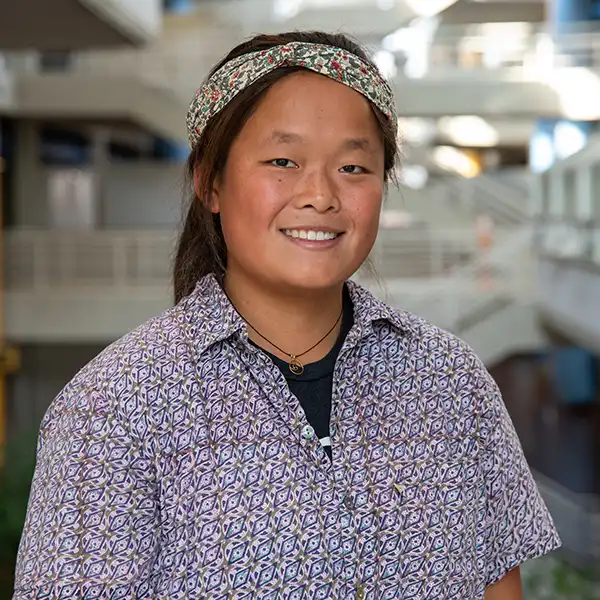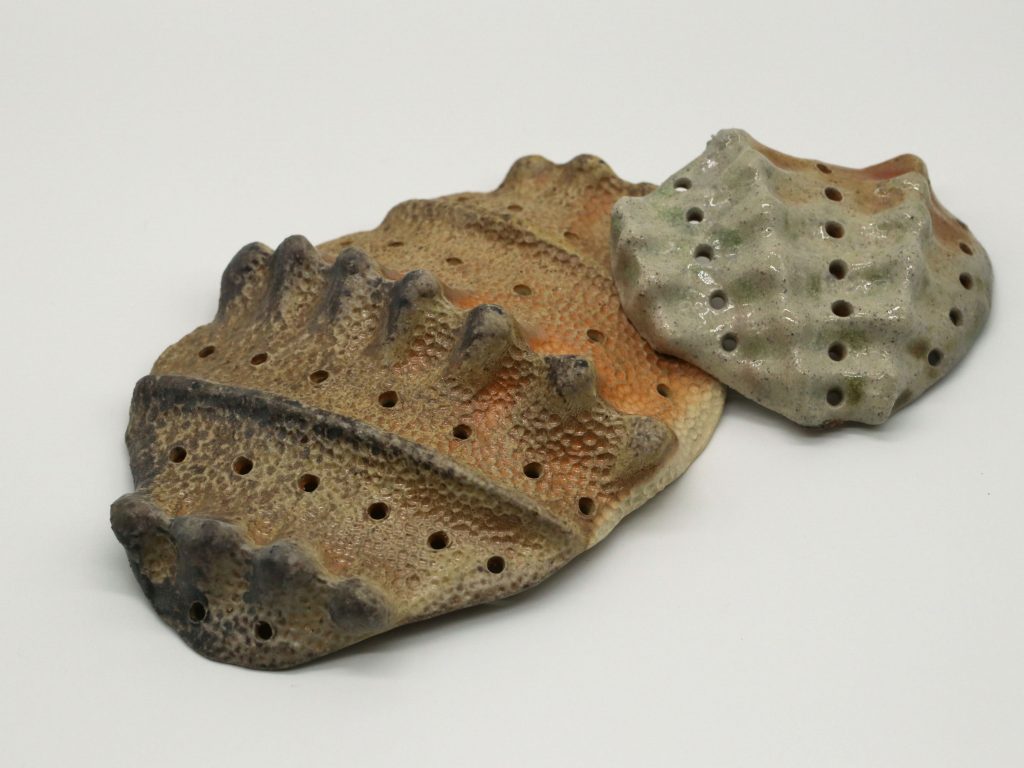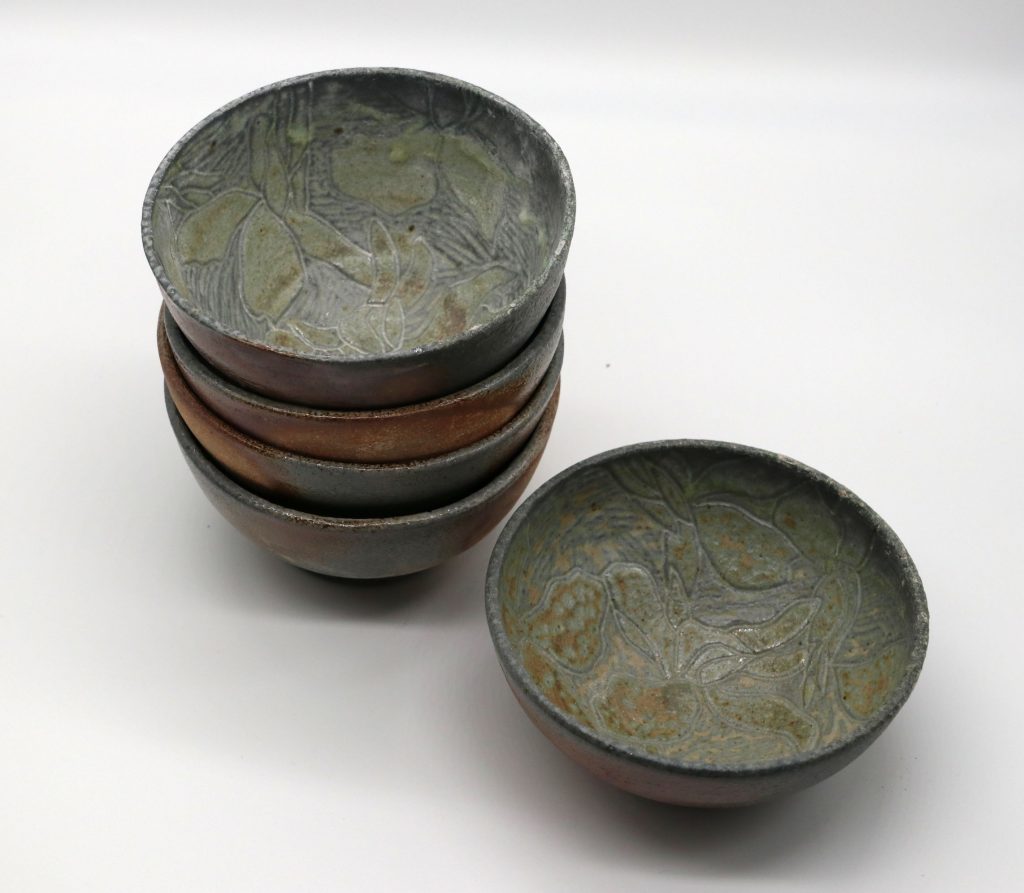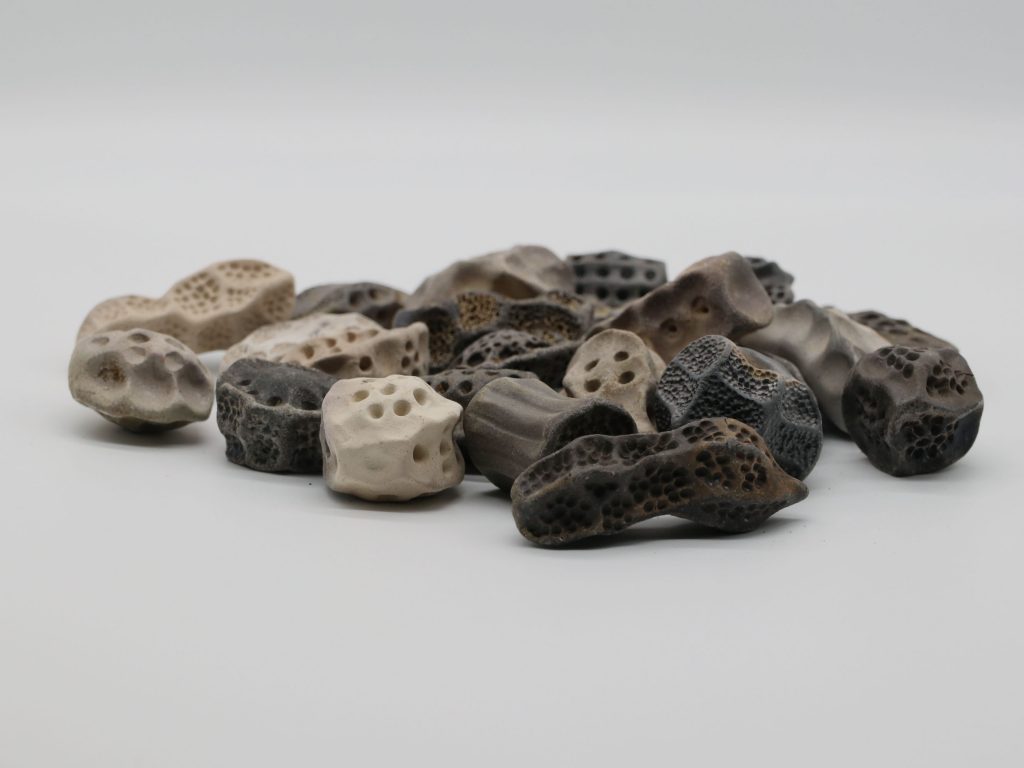MFA Student Hannah Langer: Residency at Cub Creek Foundation

This summer Hannah Langer, MFA student in the Ceramics concentration at the UT School of Art, completed a 3 month residency at the Cub Creek Foundation in Appomattox, VA. During her time at the residency she was able to explore not only different atmosphere firings and native clays, but also learn new techniques from the other artists living and working at the residency. Her current work focuses around her lived experience and how it relates to the idea of preservation of those memories. One of the projects she was most proud of completing during the residency was a 1000 miniatures of her radiolaria series. Her interest in these microorganisms started with a fascination with Ernst Haeckel’s drawings in a book that she found at a used bookstore. However, it has moved beyond that as she has researched how these organism’s skeletons are used for scientific data, which she has related to the idea of how we as humans work to preserve our memories.
The series itself stemmed from the idea of wanting to create a practice that went beyond the studio and created a more communal environment with the people around her. This meant that her fellow residents got used to her creating these sculptures everywhere and anytime. Beyond this series she also worked on some experimental pieces and larger scale radiolaria. The large scale radiolaria pieces were used in a piece that she displayed at the first and second year MFA show that she titled To Trap the Memories that We Hold So Dear.
She also created a series of bowls that were connected to her time in Appomattox as she used the native red clay to create a slip to make sgraffito flower designs. This flower design came from her summer job as when she was not working in the studio or doing wood preparations for the firing she was working on a lavender field. The flowers that she carves into these bowls are called larkspurs and though they are not lavender they were the first flowers that she helped to harvest at her job.
As she enters into her second year of the MFA program at the University of Tennessee she is excited to see the ways that the research she did over the summer will affect her new body of work this coming semester and year.






